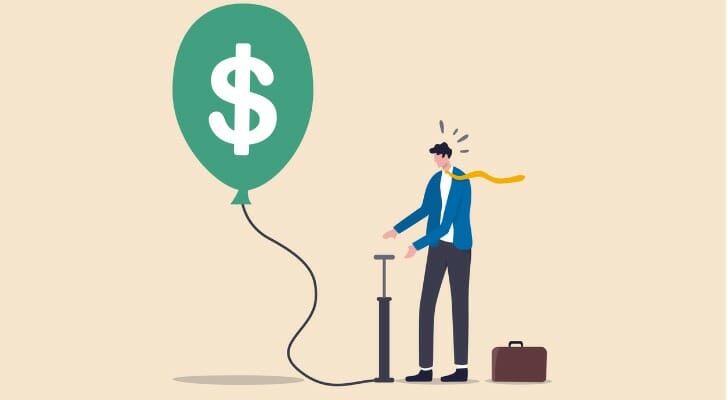 Investing is about more than just saving enough money for retirement. It requires investors to think about inflation, especially when it comes to a retirement portfolio. Without factoring in the effects of inflation over the years to come, those savings might not be enough to last. The breakeven inflation rate is a predictive measurement that helps investors gauge how certain investments are likely to perform during periods of high inflation. That may determine where they should focus certain savings efforts today.
Investing is about more than just saving enough money for retirement. It requires investors to think about inflation, especially when it comes to a retirement portfolio. Without factoring in the effects of inflation over the years to come, those savings might not be enough to last. The breakeven inflation rate is a predictive measurement that helps investors gauge how certain investments are likely to perform during periods of high inflation. That may determine where they should focus certain savings efforts today.
However you set up your portfolio, consider working with a financial advisor for an objective and informed perspective.
Inflation is an important factor to keep in mind when saving for a big future goal, such as retirement. This is especially true if your target retirement date is still decades away. That’s because the retirement needs you calculate today may not get you nearly as far when the time comes to pull from those investments.
What Is the Breakeven Inflation Rate?
The breakeven inflation rate is a measurement that aims to predict the effects of inflation on certain investments, by analyzing known market inflation rates from recent years. Though this measurement is neither perfect nor guaranteed, it is generally a good estimate of what investors can expect from the market in the years to come.
This rate calculation is typically used when investors are deciding between buying TIPS – or Treasury inflation-protected securities – and nominal Treasuries. It may help indicate which one will hedge against inflation better.
The breakeven inflation rate provides a look at possible inflation trends in the future. It also helps investors determine whether Treasuries or TIPS are the better bargain at that moment in time.
Calculating the Breakeven Inflation Rate

In order to calculate a breakeven inflation rate, one needs to simply compare the yield of an inflation-based bond (like TIPS) with a nominal bond of the same maturity period. The difference between how the two have performed during that time frame represents the breakeven inflation rate, or the rate that inflation would have to be for an investor to “break even” – or earn the same return – between purchasing TIPS or nominal Treasuries.
So, let’s say that you have a 10-year CD (certificate of deposit) that has yielded 5% over the course of the investment (nominal yield). You also hold an inflation-linked investment that has yielded 2.9% over the same time period (real yield).
Nominal yield – real yield = breakeven inflation rate
In this case, your breakeven inflation rate is 2.1% (5 – 2.9 = 2.1).
Why the Breakeven Inflation Rate Matters
So, what does this number actually mean? Take a look at the example above.
This would indicate that over the next 10 years, today’s investors expect inflation to average around 2.1%. Of course, that number isn’t guaranteed. It’s simply an expectation based on the inflation rate of today and over the last 10 years.
Though it isn’t a guaranteed forecast, the breakeven rate can still be helpful to investors who want to outperform inflation.
Using that same example: if you believe that in the next 10 years, inflation will average more than 2.1%, you may want to consider purchasing Treasury inflation-protected securities (TIPS). If you believe that inflation will average less than 2.1% in the coming decade, a nominal Treasury might be the better choice for your portfolio.
The Bottom Line

The breakeven inflation rate is calculated by subtracting the yield of an inflation-protected bond from the yield of a nominal bond during the same time period. This number represents what inflation would have to be in order for investors to “break even” (or earn the same) when buying one bond type over the other. This calculated rate is not guaranteed, but it helps investors get an idea of what inflation may do in the years to come, based on the current market and that of the past few years.
Tips on Inflation
- Consider getting help from a financial advisor as you prepare your portfolio to withstand the effect of inflation. Finding a financial advisor doesn’t have to be hard. SmartAsset’s matching tool can connect you to several in your area, in just minutes. All you have to do is answer a few simple questions. If you’re ready, get started now.
- Use our free inflation calculator to determine the buying power of a dollar over time in the United States.
Photo credit: ©iStock.com/Nuthawut Somsuk, ©iStock.com/Bet_Noire, ©iStock.com/Altayb